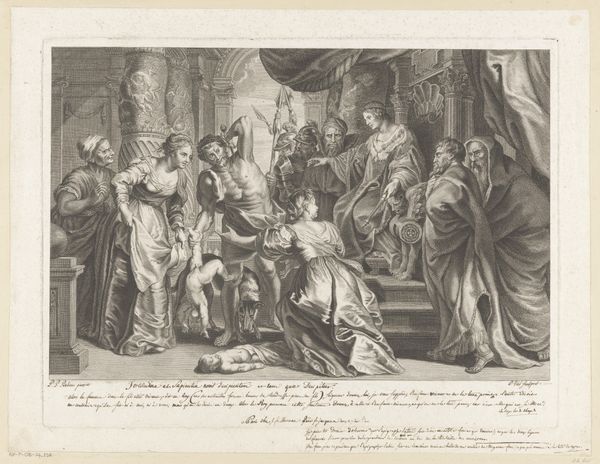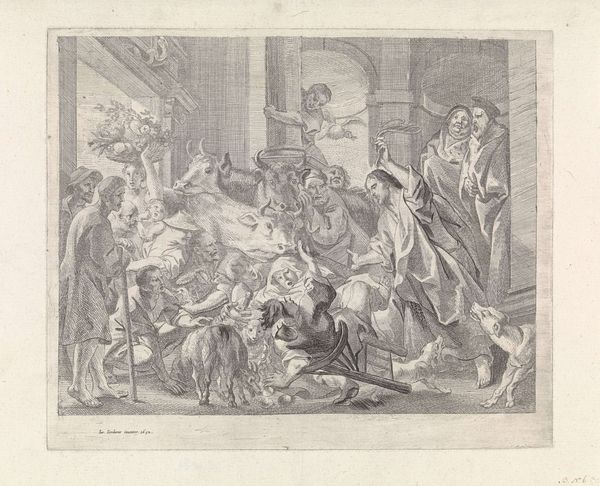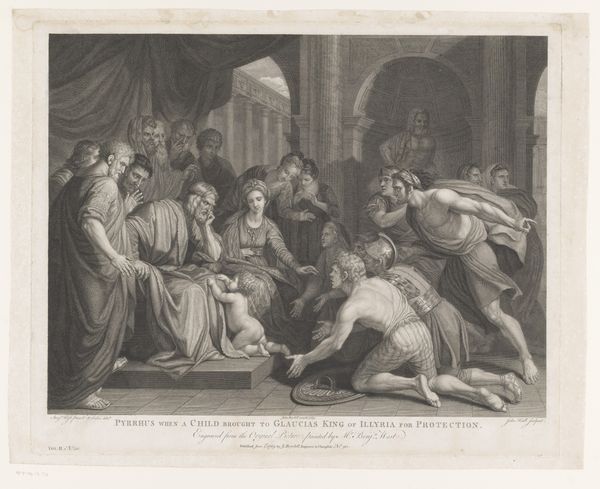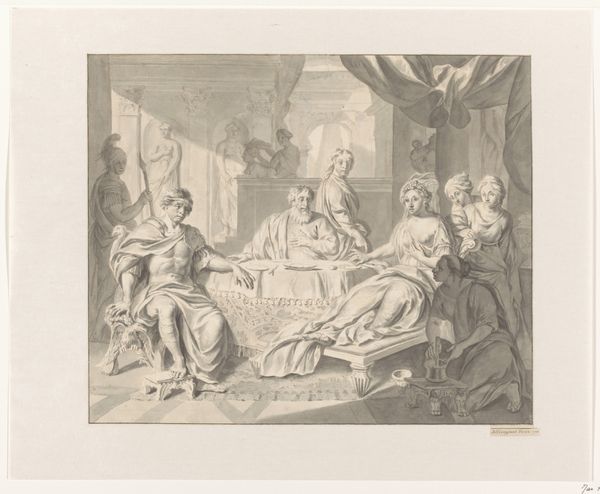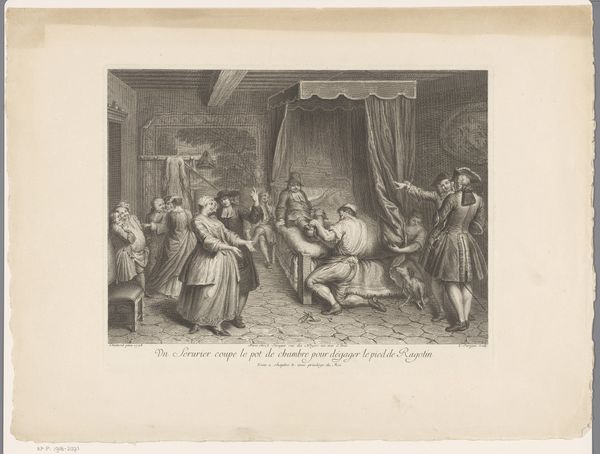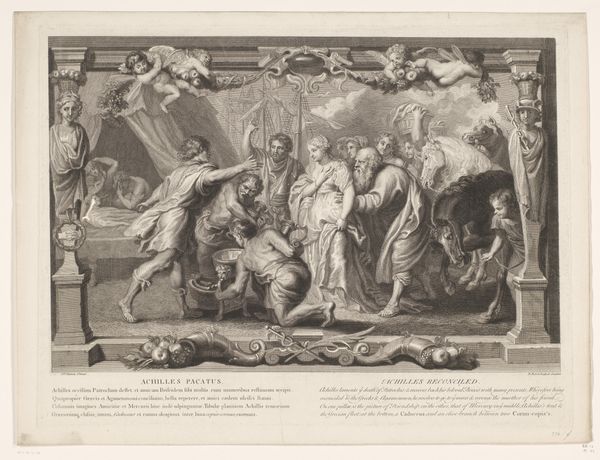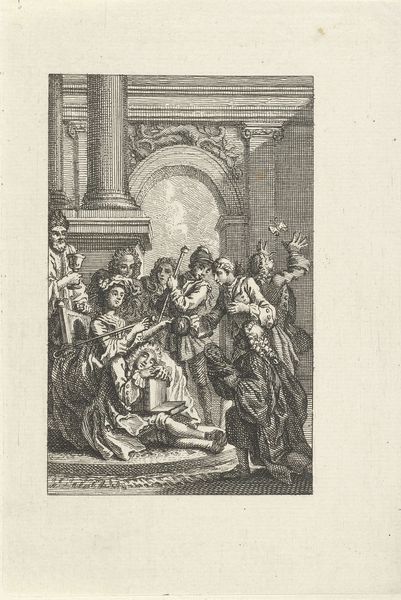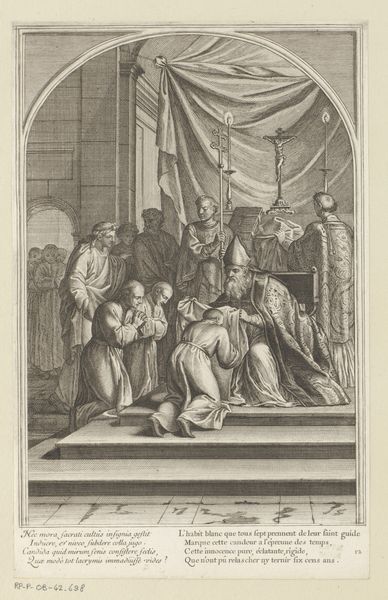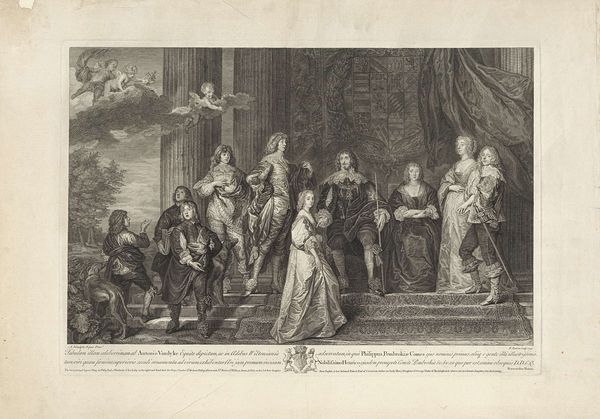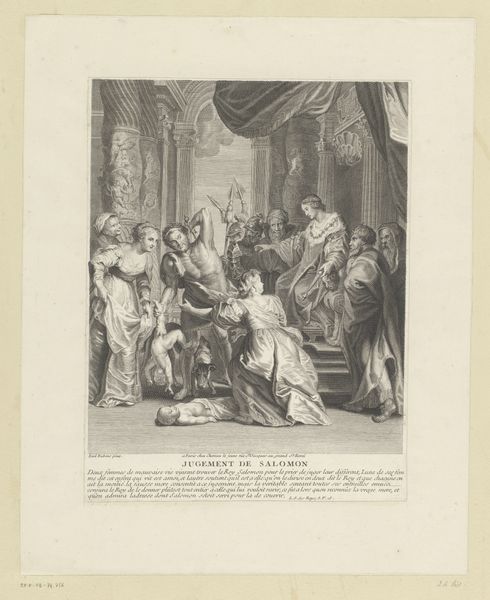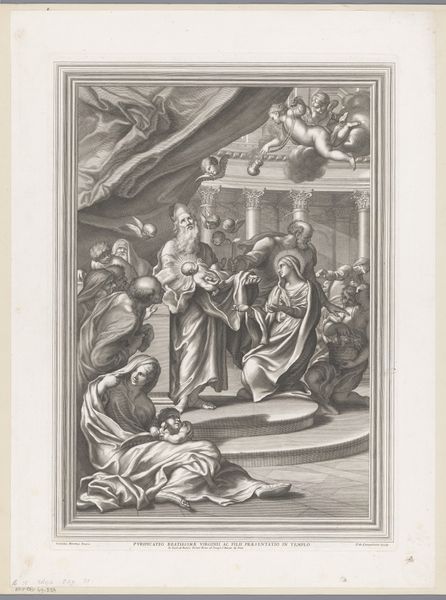
print, engraving
#
narrative-art
#
baroque
# print
#
figuration
#
pencil drawing
#
line
#
history-painting
#
engraving
Dimensions: height 528 mm, width 655 mm
Copyright: Rijks Museum: Open Domain
Editor: This print is "The Judgement of Solomon" by Jean-Baptiste de Poilly, dating sometime between 1679 and 1728. It depicts a dramatic scene, full of tension, created through very fine lines. How do you interpret this work within its historical context? Curator: Well, on the surface, it illustrates the famous biblical story, showcasing Solomon's wisdom. However, I think we need to dig deeper, viewing it as a commentary on power and societal structures of that time. Consider who has agency here: Solomon, the powerful King. The women's identities, however, are wrapped in motherhood and deceit. Does that resonate with you at all? Editor: Definitely. The focus is on Solomon's wisdom in resolving disputes. The women are secondary. But could it also be arguing something about the role of justice? Curator: Exactly! It prompts us to question justice systems, then and now, and who they protect or fail to protect. Look at how the artist positions Solomon, elevated and in control, literally sitting in judgement, wielding symbolic power that remains so very current in our socio-political systems. The male gaze has certainly shaped art like this. Editor: So you're saying this artwork, seemingly about a single event, speaks to broader issues of power dynamics, gender inequality, and the historical construction of justice? Curator: Precisely. The Judgment of Solomon" becomes more than just a biblical story. It is a reflection on historical inequities that we, in turn, need to recognize and reconcile today. It is always about today! Editor: I hadn't considered those layers. I will definitely have that in mind moving forward. Thanks for sharing that new perspective! Curator: It is so important to continually seek such nuanced and relevant layers. My pleasure.
Comments
No comments
Be the first to comment and join the conversation on the ultimate creative platform.
